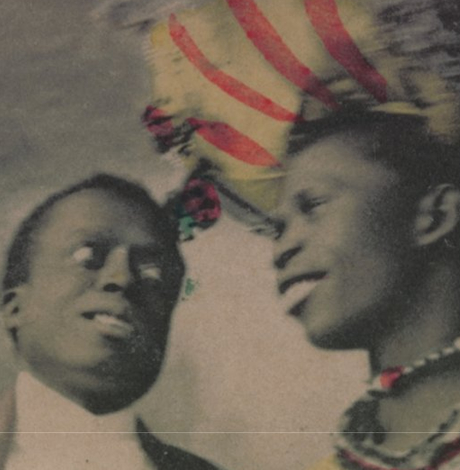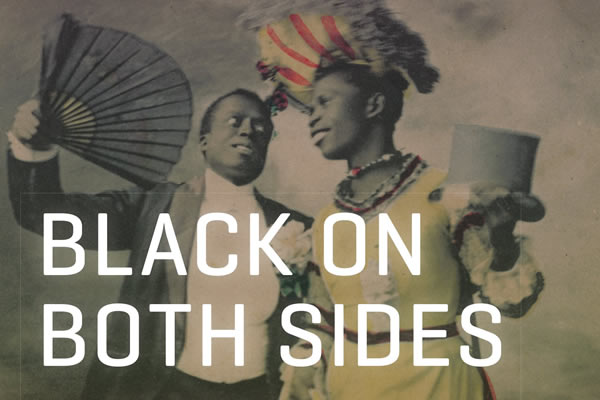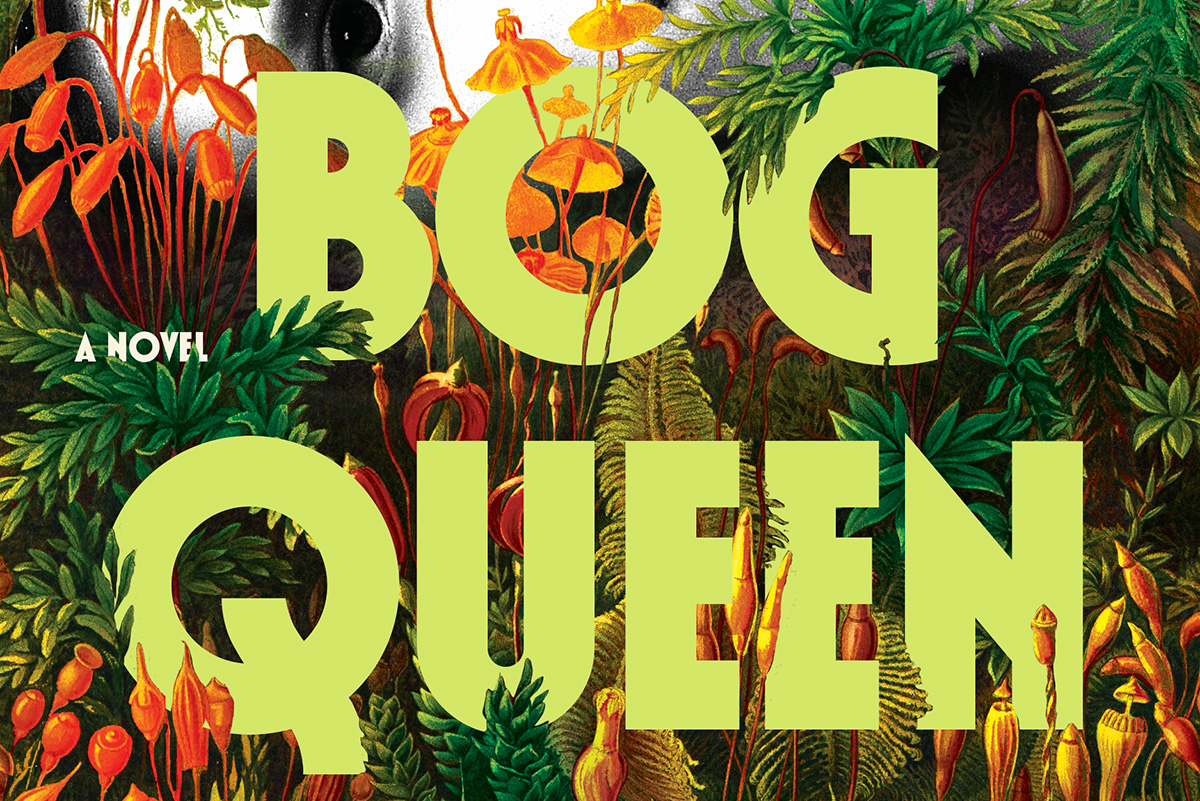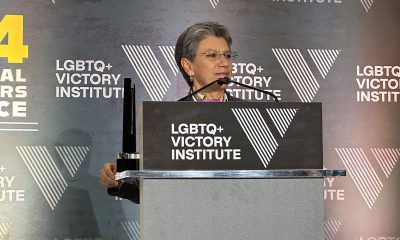Books
FALL ARTS PREVIEW 2017: Books
Maupin’s memoirs, drag photos, ‘Davie Bowie Made Me Gay’ among fall book highlights


‘Black on Both Sides: a Racial History of Trans Identity’ is slated for a December release. It explores the lives of black trans women throughout U.S. history. (Photo courtesy University of Minnesota Press)
EVENTS
The 22nd annual Baltimore Book Festival returns to the Inner Harbor Promenade Sept. 22-24. The festival, which is free and open to the public from 11 a.m.-7 p.m. each day, will feature about 500 presenting authors and 3,000 books for purchase at the Ivy Book Shop. Some of the literary stars who will be presenting include Nigerian author Chimamanda Ngozi Adichie, children’s book writer Adam Gidwitz, and queer poet, writer, and performer Eileen Myles. For more details, including the full schedule of events, visit baltimorebookfestival.org.
Hot off the release of his highly anticipated memoir, “Logical Family” (Harper, Oct. 3), Armistead Maupin will speak at the National Museum of the American Indian (4th St and Independence Ave., N.W.) at 6:45 p.m. on Wednesday, Oct. 4. “Armistead Maupin: Tales of a Lifetime,” will include a reading, discussion and book signing. “Logical Family” traces Maupin’s journey from his childhood in conservative North Carolina to Vietnam and eventually 1970s gay San Francisco, recounting the relationships he cherished along the way and how they have shaped him into one of America’s most celebrated writers. For more information and to purchase tickets, visit smithsonianassociates.org.
RELEASES
Hillary Clinton’s seventh book (her third memoir) “What Happened” (Simon & Schuster, Sept. 12) recounts her failed quest for the White House last year. Clinton has been more candid of late, a change of tone some — political ideology aside — are finding refreshing. Be prepared to shell out big bucks if you want to catch her on her book tour. Her Sept. 18 appearance at Warner Theatre in Washington is nearly sold out (and may be by the time this is published). As of Monday, tickets were still available ranging from $195-345. Visit livenation.com for details.
If you’re a poetry fan, “Madness” by Sam Sax (Penguin Books, Sept. 12) is a stunning debut collection that interrogates our understanding of heterosexuality, sanity, masculinity and addiction. Sax, a queer Jewish writer and educator, draws on his personal and family mental health history to confront these difficult themes with fearlessness and candor.
In his latest conceptual series, “Beautiful Berlin Boys” (Kehrer Verlag, Sept. 12), Iranian American photographer, Ashkan Sahihi, pays homage to the gay creative community ravaged by the AIDS epidemic in 1980s New York City through nude photographs of gay artists in modern-day Berlin. In compiling the spare, intimate portraits, Sahihi discovered a haunting familiarity in his subjects, who recall the gay avant garde of his past while representing the newest generation of gay men in what he considers today’s creative capital.
“True Sex: the Lives of Trans Men at the Turn of the Twentieth Century” by Emily Skidmore (NYU Press, Sept. 19) tells the overlooked stories of 18 trans men who assimilated into small town communities during the late 1800s. Skidmore pieces together reports from local newspapers, medical journals and other sources to offer queer narratives that were not cosmopolitan or subversive, but rather quite ordinary, challenging our preconceived notions of community, rural identity and who we think of as trans or queer.
Amidst political uncertainty surrounding LGBT rights, “Nasty Women: Feminism, Resistance, and Revolution in Trump’s America” by Samhita Mukhopadhyay and Kate Harding (Picador, Oct. 3) is an inspiring collection of essays from leading feminist writers who describe how we got here and how we can resist. Featured essays include Samantha Irby on living as a queer black woman in rural America, Randa Jarrar on cross country travel as a queer Muslim woman and Meredith Taulson on feminism and the transgender community, among many others.
“The Book of Love and Hate,” a new novel from Lambda Literary Award winner Lauren Sanders (Akashic Books, Oct. 3) tells of of protagonist Jennifer Baron encounters with queer Palestinians in Israel while searching for her missing father.
Also out that day is “TELL: Love, Defiance and the Military Trial at the Tipping Point for Gay Rights” by Maj. Margaret Witt with Tim Connor (ForeEdge, Oct. 3), a personal account of Witt’s decorated military career and the path to the repeal of the “Don’t Ask, Don’t Tell” policy for LGBT servicemembers.
Any true Sasha Velour fan already has “Drags” (Kmw Studio, Oct. 16) set to preorder. Shot by photographer Gregory Kramer, the collection features hyper-glam black and white, full-length studio portraits of New York City’s drag kings and queens. “Drags” also includes essays by some of the photo subjects themselves: Charles Busch, Linda Simpson, Goldie Simpson, and of course, the ever-scholarly Sasha.
With recipes written as deliciously as they taste, “The Juhu Beach Club Cookbook: Indian Spice, Oakland Soul” by Preeti Mistry and Sarah Henry (Running Press, Oct. 31) has already sent the foodie world into a frenzy well beyond the Bay Area. Mistry, a gay Indian American chef beloved for her big personality, provides a contemporary spin on the traditional Indian cooking she grew up with in this eclectic collection of street food, comfort classics and haute cuisine.
Andrea Lawlor’s debut novel, “Paul Takes the Form of a Mortal Girl” (Rescue Press, Nov. 1), offers a witty and raucous portrait of LGBT radicalism during the early ‘90s. The story follows Paul Polydoris, who studies queer theory and writes provocative zines when not tending bar at the local gay club. Lawlor portrays an exhilarating picaresque hero whose identity seesaws from Riot Grrl to leather cub as he parties through era staples, such as the Michigan Womyn’s Festival.
As a blend of memoir, true crime and ghost story, “Mean” by Myriam Gurba (Coffee House Press, Nov. 14) is difficult to categorize, but hilarious and poignant at every twist and turn. Gurba, a spoken-word performer and visual artist, tells her own coming of age story as a queer, mixed-race Chicana in California. “Mean” tackles themes of sexual violence, racism and homophobia with brassiness and heart as multilayered as Gurba’s approach to genre.
“Every Night is Saturday Night: A Country Girl’s Journey to the Rock & Roll Hall of Fame” (BMG, Nov. 14), written alongside Scott B. Bomar, is the long-awaited autobiography of Wanda Jackson, the legendary “Queen of Rockabilly,” “First Lady of Rock & Roll” and treasured gay icon. Jackson shares personal stories on her relationship with Elvis Presley, her faith and the challenges she faced in bringing sex appeal to country music and femininity to Rock & Roll. The book also features a foreword by Elvis Costello.
In need of some playlist inspiration? “David Bowie Made Me Gay” by Darryl W. Bullock (The Overlook Press, Nov. 21) is a highly comprehensive history of LGBT music, spanning a century from early jazz and blues to today’s most recognizable pop stars out of the closet. Bullock meticulously chronicles the LGBT community’s vast influence on music through a historical lens, revealing how society’s oscillation between acceptance and persecution has shaped what we listen to today.
In “Black on Both Sides: A Racial History of Trans Identity” (University of Minnesota Press, Dec. 5), C. Riley Snorton uncovers the obscured or erased narratives of black trans women in the United States, beginning with the mid-19th century and continuing through present-day oppression and resistance. Snorton, a professor of Africana studies and feminist, gender and sexuality studies at Cornell University, builds on early sexological writings, fugitive slave stories, Afro-modernist literature and other materials to craft this essential account of black trans history.
Other releases of note include:
• “Murder Under the Fig Tree: A Palestine Mystery,” by Kate Jessica Raphael (She Writes Press), is a murder mystery novel that draws Rania Bakara, a Palestinian policewoman, deep into the underground Palestinian gay scene as she investigates the death of young man in a village adjacent to her own. The book is $16.95 and releases Sept. 19.
• “The Ultimate Guide to Gay Dads: Everything You Need to Know About LGBT Parenting But Are (Mostly) Afraid to Ask,” by Eric Rosswood (Mango), is a generous resource for gay and bisexual men who are thinking about starting a family together. The guide is $13.85 and releases Oct. 24.
• “Mostly Straight: Sexual Fluidity among Men” by Ritch C. Savin-Williams (Harvard University Press) is a biological, empirical and psychological research-based exploration of the personal stories of 40 young men who identify as sexually fluid or “mostly straight.” The book is $27.95 and releases Nov. 3.
• “Patient Zero and the Making of the AIDS Epidemic,” by Richard A. McKay (University of Chicago Press), investigates the introduction of the term “patient zero” into the popular lexicon during the 1980s AIDS epidemic. The book thoughtfully traces the life of Gaëtan Dugas, who was incorrectly identified (and vilified) as the first AIDS case in North America. It is $24.91 and releases Nov. 15.
Books
Feminist fiction fans will love ‘Bog Queen’
A wonderful tale of druids, warriors, scheming kings, and a scientist

‘Bog Queen’
By Anna North
c.2025, Bloomsbury
$28.99/288 pages
Consider: lost and found.
The first one is miserable – whatever you need or want is gone, maybe for good. The second one can be joyful, a celebration of great relief and a reminder to look in the same spot next time you need that which you first lost. Loss hurts. But as in the new novel, “Bog Queen” by Anna North, discovery isn’t always without pain.

He’d always stuck to the story.
In 1961, or so he claimed, Isabel Navarro argued with her husband, as they had many times. At one point, she stalked out. Done. Gone, but there was always doubt – and now it seemed he’d been lying for decades: when peat cutters discovered the body of a young woman near his home in northwest England, Navarro finally admitted that he’d killed Isabel and dumped her corpse into a bog.
Officials prepared to charge him.
But again, that doubt. The body, as forensic anthropologist Agnes Lundstrom discovered rather quickly, was not that of Isabel. This bog woman had nearly healed wounds and her head showed old skull fractures. Her skin glowed yellow from decaying moss that her body had steeped in. No, the corpse in the bog was not from a half-century ago.
She was roughly 2,000 years old.
But who was the woman from the bog? Knowing more about her would’ve been a nice distraction for Agnes; she’d left America to move to England, left her father and a man she might have loved once, with the hope that her life could be different. She disliked solitude but she felt awkward around people, including the environmental activists, politicians, and others surrounding the discovery of the Iron Age corpse.
Was the woman beloved? Agnes could tell that she’d obviously been well cared-for, and relatively healthy despite the injuries she’d sustained. If there were any artifacts left in the bog, Agnes would have the answers she wanted. If only Isabel’s family, the activists, and authorities could come together and grant her more time.
Fortunately, that’s what you get inside “Bog Queen”: time, spanning from the Iron Age and the story of a young, inexperienced druid who’s hoping to forge ties with a southern kingdom; to 2018, the year in which the modern portion of this book is set.
Yes, you get both.
Yes, you’ll devour them.
Taking parts of a true story, author Anna North spins a wonderful tale of druids, vengeful warriors, scheming kings, and a scientist who’s as much of a genius as she is a nerd. The tale of the two women swings back and forth between chapters and eras, mixed with female strength and twenty-first century concerns. Even better, these perfectly mixed parts are occasionally joined by a third entity that adds a delicious note of darkness, as if whatever happens can be erased in a moment.
Nah, don’t even think about resisting.
If you’re a fan of feminist fiction, science, or novels featuring kings, druids, and Celtic history, don’t wait. “Bog Queen” is your book. Look. You’ll be glad you found it.

This past year, you’ve often had to make do.
Saving money here, resources there, being inventive and innovative. It’s a talent you’ve honed, but isn’t it time to have the best? Yep, so grab these Ten Best of 2025 books for your new year pleasures.
Nonfiction
Health care is on everyone’s mind now, and “A Living: Working-Class Americans Talk to Their Doctor” by Michael D. Stein, M.D. (Melville House, $26.99) lets you peek into health care from the point of view of a doctor who treats “front-line workers” and those who experience poverty and homelessness. It’s shocking, an eye-opening book, a skinny, quick-to-read one that needs to be read now.
If you’ve been doing eldercare or caring for any loved one, then “How to Lose Your Mother: A Daughter’s Memoir” by Molly Jong-Fast (Viking, $28) needs to be in your plans for the coming year. It’s a memoir, but also a biography of Jong-Fast’s mother, Erica Jong, and the story of love, illness, and living through the chaos of serious disease with humor and grace. You’ll like this book especially if you were a fan of the author’s late mother.
Another memoir you can’t miss this year is “Between the Devil and the Deep Blue Sea: A Veteran’s Memoir” by Khadijah Queen (Legacy Lit, $30.00). It’s the story of one woman’s determination to get out of poverty and get an education, and to keep her head above water while she goes below water by joining the U.S. Navy. This is a story that will keep you glued to your seat, all the way through.
Self-improvement is something you might think about tackling in the new year, and “Replaceable You: Adventures in Human Anatomy” by Mary Roach (W.W. Norton & Company, $28.99) is a lighthearted – yet real and informative – look at the things inside and outside your body that can be replaced or changed. New nose job? Transplant, new dental work? Learn how you can become the Bionic Person in real life, and laugh while you’re doing it.
The science lover inside you will want to read “The Grave Robber: The Biggest Stolen Artifacts Case in FBI History and the Bureau’s Quest to Set Things Right” by Tim Carpenter (Harper Horizon, $29.99). A history lover will also want it, as will anyone with a craving for true crime, memoir, FBI procedural books, and travel books. It’s the story of a man who spent his life stealing objects from graves around the world, and an FBI agent’s obsession with securing the objects and returning them. It’s a fascinating read, with just a little bit of gruesome thrown in for fun.
Fiction
Speaking of a little bit of scariness, “Don’t Forget Me, Little Bessie” by James Lee Burke (Atlantic Monthly Press, $28) is the story of a girl named Bessie and her involvement with a cloven-hooved being who dogs her all her life. Set in still-wild south Texas, it’s a little bit western, part paranormal, and completely full of enjoyment.
“Evensong” by Stewart O’Nan (Atlantic Monthly Press, $28) is a layered novel of women’s friendships as they age together and support one another. The characters are warm and funny, there are a few times when your heart will sit in your throat, and you won’t be sorry you read it. It’s just plain irresistible.
If you need a dark tale for what’s left of a dark winter season, then “One of Us” by Dan Chaon (Henry Holt, $28), it it. It’s the story of twins who become orphaned when their Mama dies, ending up with a man who owns a traveling freak show, and who promises to care for them. But they can’t ever forget that a nefarious con man is looking for them; those kids can talk to one another without saying a word, and he’s going to make lots of money off them. This is a sharp, clever novel that fans of the “circus” genre shouldn’t miss.
“When the Harvest Comes” by Denne Michele Norris (Random House, $28) is a wonderful romance, a boy-meets-boy with a little spice and a lot of strife. Davis loves Everett but as their wedding day draws near, doubts begin to creep in. There’s homophobia on both sides of their families, and no small amount of racism. Beware that there’s some light explicitness in this book, but if you love a good love story, you’ll love this.
Another layered tale you’ll enjoy is “The Elements” by John Boyne (Henry Holt, $29.99), a twisty bunch of short stories that connect in a series of arcs that begin on an island near Dublin. It’s about love, death, revenge, and horror, a little like The Twilight Zone, but without the paranormal. You won’t want to put down, so be warned.
If you need more ideas, head to your local library or bookstore and ask the staff there for their favorite reads of 2025. They’ll fill your book bag and your new year with goodness.
Season’s readings!
The Blade may receive commissions from qualifying purchases made via this post.
Books
This gay author sees dead people

‘Are You There Spirit? It’s Me, Travis’
By Travis Holp
c.2025, Spiegel and Grau
$28/240 pages
Your dad sent you a penny the other day, minted in his birth year.
They say pennies from heaven are a sign of some sort, and that makes sense: You’ve been thinking about him a lot lately. Some might scoff, but the idea that a lost loved one is trying to tell you he’s OK is comforting. So read the new book, “Are You There, Spirit? It’s Me, Travis” by Travis Holp, and keep your eyes open.

Ever since he was a young boy growing up just outside Dayton, Ohio, Travis Holp wanted to be a writer. He also wanted to say that he was gay but his conservative parents believed his gayness was some sort of phase. That, and bullying made him hide who he was.
He also had to hide his nascent ability to communicate with people who had died, through an entity he calls “Spirit.” Eventually, though it left him with psychological scars and a drinking problem he’s since overcome, Holp was finally able to talk about his gayness and reveal his otherworldly ability.
Getting some people to believe that he speaks to the dead is still a tall order. Spirit helps naysayers, as well as Holp himself.
Spirit, he says, isn’t a person or an essence; Spirit is love. Spirit is a conduit of healing and energy, speaking through Holp in symbolic messages, feelings, and through synchronistic events. For example, Holp says coincidences are not coincidental; they’re ways for loved ones to convey messages of healing and energy.
To tap into your own healing Spirit, Holp says to trust yourself when you think you’ve received a healing message. Ignore your ego, but listen to your inner voice. Remember that Spirit won’t work on any fixed timeline, and its only purpose is to exist.
And keep in mind that “anything is possible because you are an unlimited being.”
You’re going to want very much to like “Are You There, Spirit? It’s Me, Travis.” The cover photo of author Travis Holp will make you smile. Alas, what you’ll find in here is hard to read, not due to content but for lack of focus.
What’s inside this book is scattered and repetitious. Love, energy, healing, faith, and fear are words that are used often – so often, in fact, that many pages feel like they’ve been recycled, or like you’ve entered a time warp that moves you backward, page-wise. Yes, there are uplifting accounts of readings that Holp has done with clients here, and they’re exciting but there are too few of them. When you find them, you’ll love them. They may make you cry. They’re exactly what you need, if you grieve. Just not enough.
This isn’t a terrible book, but its audience might be narrow. It absolutely needs more stories, less sentiment; more tales, less transcendence and if that’s your aim, go elsewhere. But if your soul cries for comfort after loss, “Are You There, Spirit? It’s Me, Travis” might still make sense.
The Blade may receive commissions from qualifying purchases made via this post.
-

 National5 days ago
National5 days agoWhat to watch for in 2026: midterms, Supreme Court, and more
-

 Opinions5 days ago
Opinions5 days agoA reminder that Jan. 6 was ‘textbook terrorism’
-

 Colombia5 days ago
Colombia5 days agoClaudia López criticizes Trump over threats against Colombian president
-

 District of Columbia5 days ago
District of Columbia5 days agoImperial Court of Washington drag group has ‘dissolved’


















